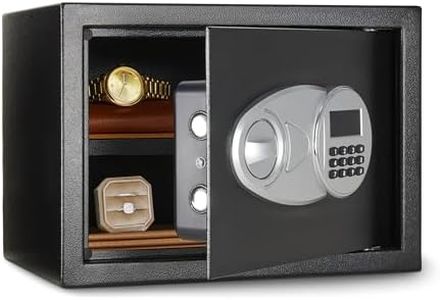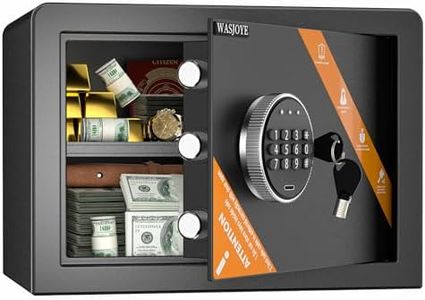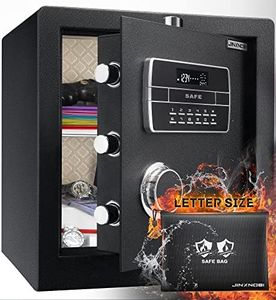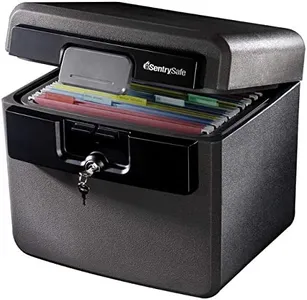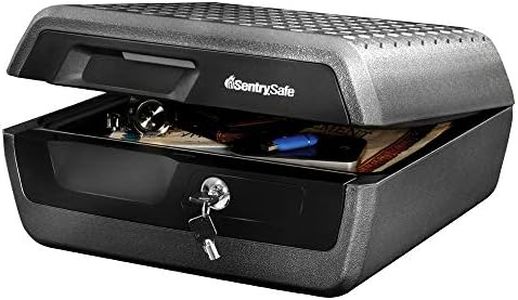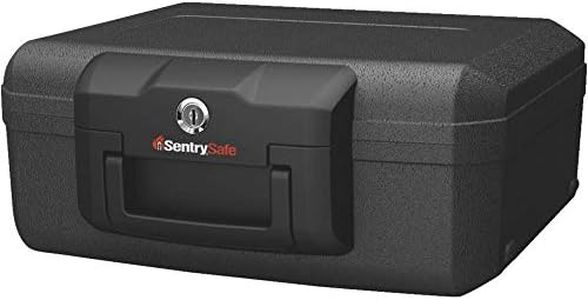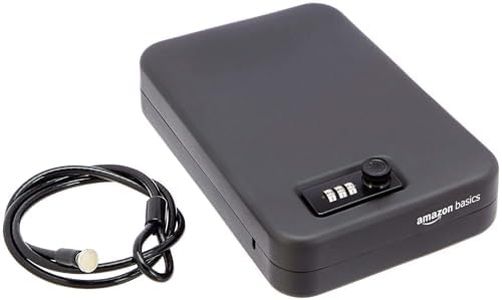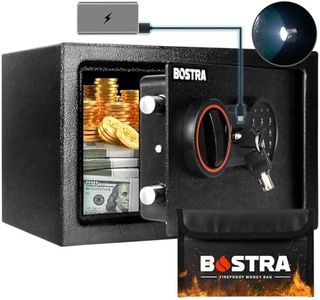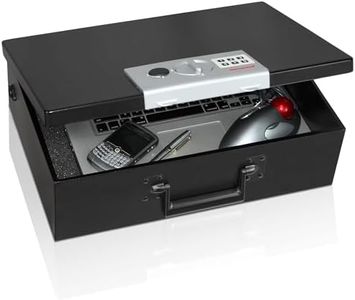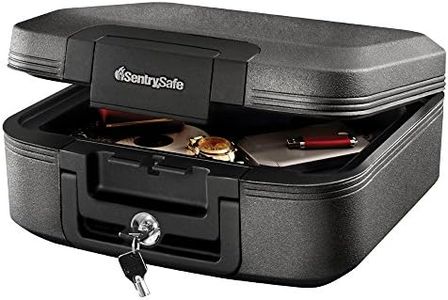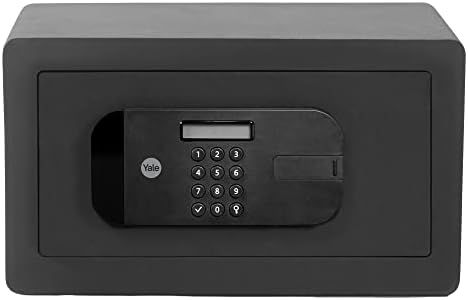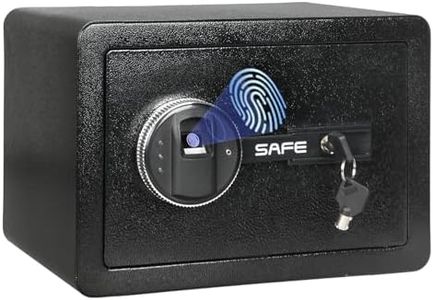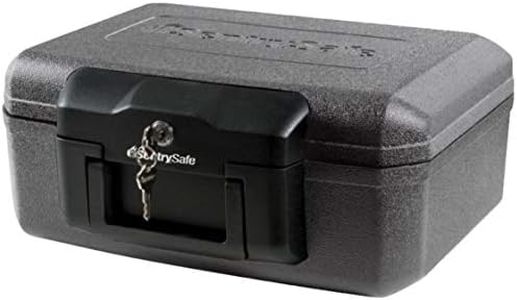We Use CookiesWe use cookies to enhance the security, performance,
functionality and for analytical and promotional activities. By continuing to browse this site you
are agreeing to our privacy policy
10 Best Small Fireproof Safes
From leading brands and best sellers available on the web.Buying Guide for the Best Small Fireproof Safes
Choosing a small fireproof safe is a smart way to protect your valuables from fire and theft in your home or office. When shopping for a safe, it's important to focus on how you’ll use it, what you’ll store inside, and where you plan to keep it. Consider the size of your items, accessibility, and the specific threats you’re hoping to guard against. The most effective safe is one that fits your needs, offers reliable fire protection, and is convenient to use without being easy for others to remove or break into.Fire RatingThe fire rating tells you how well a safe can protect its contents from fire and for how long. It’s usually measured in minutes or hours at a certain temperature, indicating the safe's ability to keep its inside below a damaging heat threshold. Typical segments are 30 minutes, 60 minutes, and 120 minutes, with higher times meaning better protection. Consider what you’re storing: important documents and data require better fire resistance than cash or jewelry. If your risk of fire is high or you’re storing irreplaceable items, aim for a longer fire rating.
Size and CapacityThis refers to the internal storage space of the safe, determining how much you can fit inside. Capacity is usually measured in cubic feet or liters. Small safes might be under 1 cubic foot, while some are slightly larger while still being considered 'small.' Think about what you plan to store—passports, documents, small electronics—and measure them before choosing a safe. Picking the right size is about matching your storage needs without going too large, which can make the safe harder to hide and move.
Locking MechanismThe locking mechanism is how you secure and access the safe and includes options like key locks, combination dials, electronic keypads, or biometric scanners. Key locks are straightforward but can be less secure if keys are misplaced. Combination and electronic keypads offer more security, with electronics allowing for quicker access. Biometric (fingerprint) locks are convenient for frequent use. Choose based on how often you need access and your comfort with technology—simple keys are fine for occasional use, while digital options suit those wanting fast, regular entry.
Portability and MountingThis covers whether the safe is easily moved and if it can be anchored to furniture or the floor. Portability is convenient, but it also means thieves can carry it away more easily. Some small safes offer pre-drilled holes and hardware so you can bolt them down, which adds security. If you prioritize theft protection, look for mounting features. If you need to move the safe, lighter and non-mounted options make sense, but always balance convenience with security needs.
Water ResistanceWater resistance means the safe can keep contents dry in the event of flooding or fire sprinkler activation. Not all fireproof safes are waterproof, so look for official ratings that indicate how long and how deep the safe can withstand water exposure. If you’re storing papers or electronics and live in an area prone to flooding or leaks, water resistance is a key factor to consider. Pick this feature if responsible for protecting documents from more than just fire.
Construction and MaterialThis refers to what the safe is made from, such as steel and fire-resistant composites, which affect overall durability and protection levels. Heavier gauge steel and quality insulation offer better protection from both fire and forced entry. Lighter, thinner safes may be easier to carry and hide but offer less security. If maximum safety is important, look for safes with thicker walls and reliable construction—and remember that internal hinges and strong door bolts add further protection.
